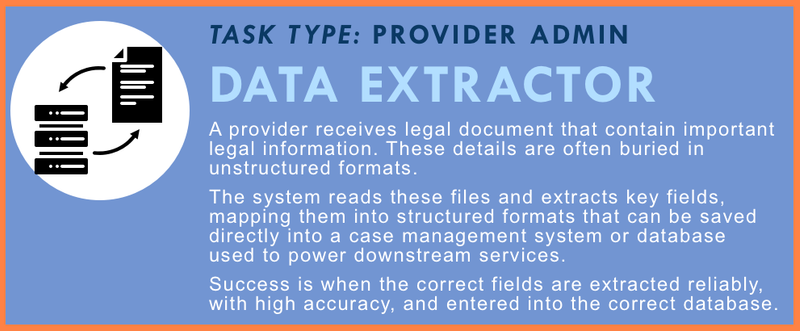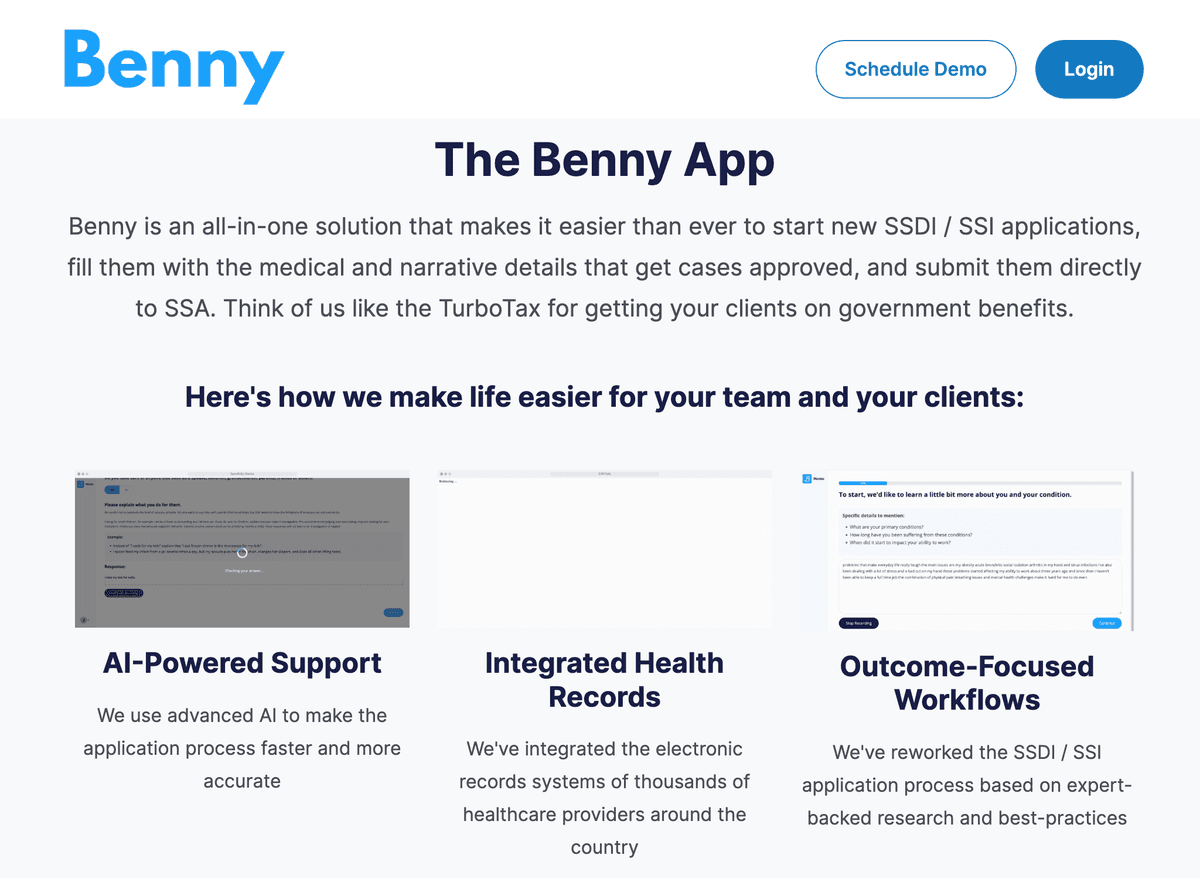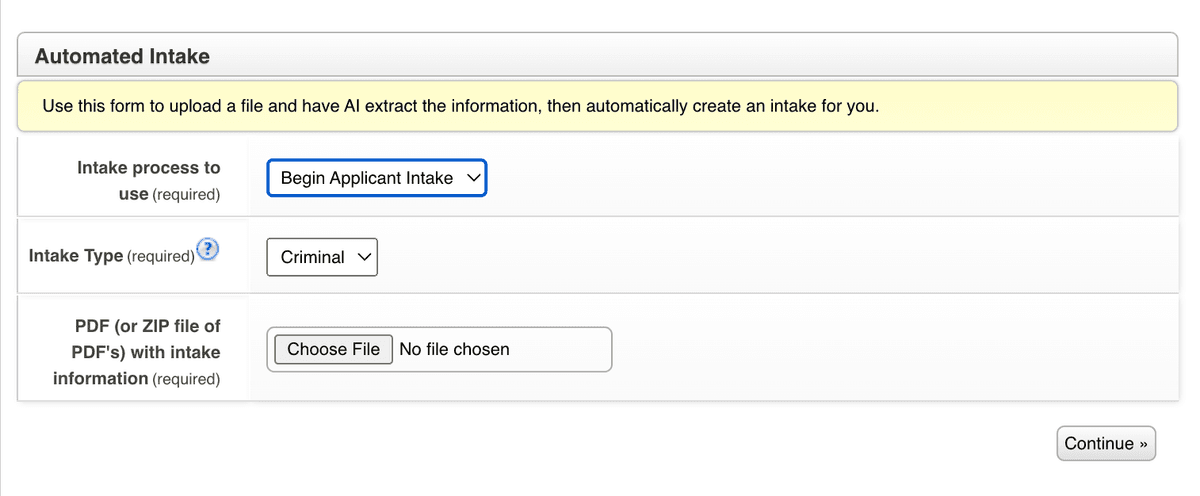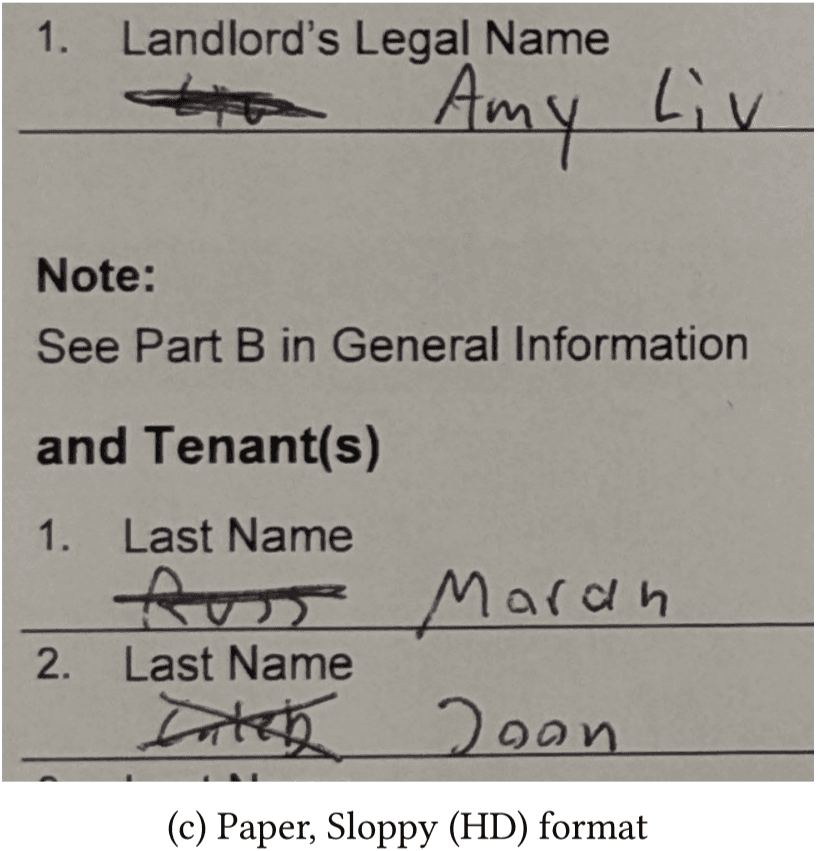Data Extractor

Automatically extract structured, actionable data from court forms, PDFs, contracts, and images to populate case management systems and support legal service workflows.
Task Description
Legal help providers routinely receive unstructured or semi-structured documents—such as court filings, notices, leases, scanned intake forms, handwritten notes, and correspondence—that contain critical information needed for case management, legal analysis, and follow-up services. Manually reviewing and extracting key data fields from these documents is time-consuming, error-prone, and difficult to scale.
This task involves developing or using AI-enabled tools to scan and parse these documents, extracting relevant data points such as case numbers, party names, filing dates, rent demands, deadlines, court hearing times, and other procedural facts. The system transforms this information into structured formats that can be automatically imported into a legal aid organization’s case management system (e.g., LegalServer, Salesforce, Pika, etc.), CRM, or other databases.
This process should work securely and reliably on a variety of formats:
- Scanned PDFs and images (via OCR)
- Fillable or non-fillable court forms
- Emails and attachments
- Typed or handwritten intake notes
Depending on the level of sophistication, the system may include human-in-the-loop review for quality assurance or continuous learning mechanisms. The long-term goal is to reduce administrative overhead, ensure timely data entry, and make legal service delivery faster and more accurate.
How to Measure Quality?
1. Accuracy of Extraction
The system should correctly identify and extract the intended data fields from legal documents. Success means that values like case numbers, rent amounts, party names, and dates are accurately pulled from the source and matched to the correct data fields. A strong benchmark would be at least 95% field-level accuracy.
2. Coverage Across Document Types
The extraction tool should work across a variety of legal document formats—scanned PDFs, court forms, images, emails, and contracts. It should consistently capture key information across these sources. A reliable system should be able to extract 90% or more of required fields regardless of format variations.
3. Data Cleanliness and Formatting
Extracted data should be free from OCR errors, incomplete values, or inconsistent formatting. For example, dates should be normalized (e.g., MM/DD/YYYY), names should be cleanly parsed, and monetary values should be consistently formatted. No noise or manual cleanup should be needed before import into downstream systems.
4. Integration with Case Management Systems (CMS)
The structured data must be easily importable into a provider’s CMS or other backend system without needing manual rework. The tool should either directly integrate with the CMS via API or produce well-structured output formats (like JSON or CSV) that map cleanly to the provider’s existing database fields.
5. Security and Privacy Protections
Given the sensitive nature of the data, all document processing should follow strict data privacy protocols. This includes end-to-end encryption, access control, and audit logging. The system must avoid storing data unnecessarily and ensure compliance with client confidentiality and relevant privacy laws.
6. Speed and Efficiency
The extraction process should be fast enough to support time-sensitive legal workflows, ideally completing within 1 minute for most documents. This ensures legal teams can use the output in real-time intake or response settings.
7. Error Transparency and Human Review
Where the AI model is unsure about an extraction (e.g., blurry text, conflicting values), it should flag low-confidence fields and allow for easy manual review. A good system makes it easy for staff to correct or confirm data before final submission, improving overall trust and reliability.
Related Projects

Benny the Benefits Navigator
An AI-enabled platform that streamlines Social Security Disability Insurance (SSDI) and Supplemental Security Income (SSI) applications, to reduce completion time and improve accuracy, completeness, and approval rates.

Automated Intake Data Extractor
LegalServer's Automated Intake Mode allows organizations to upload scanned or digital documents and automatically extract structured intake data into their case management system.

Lease Data Extractor with AI
A research prototype to extract structured data from images of Tenancy Agreements (typed, neat, and sloppy) using AI